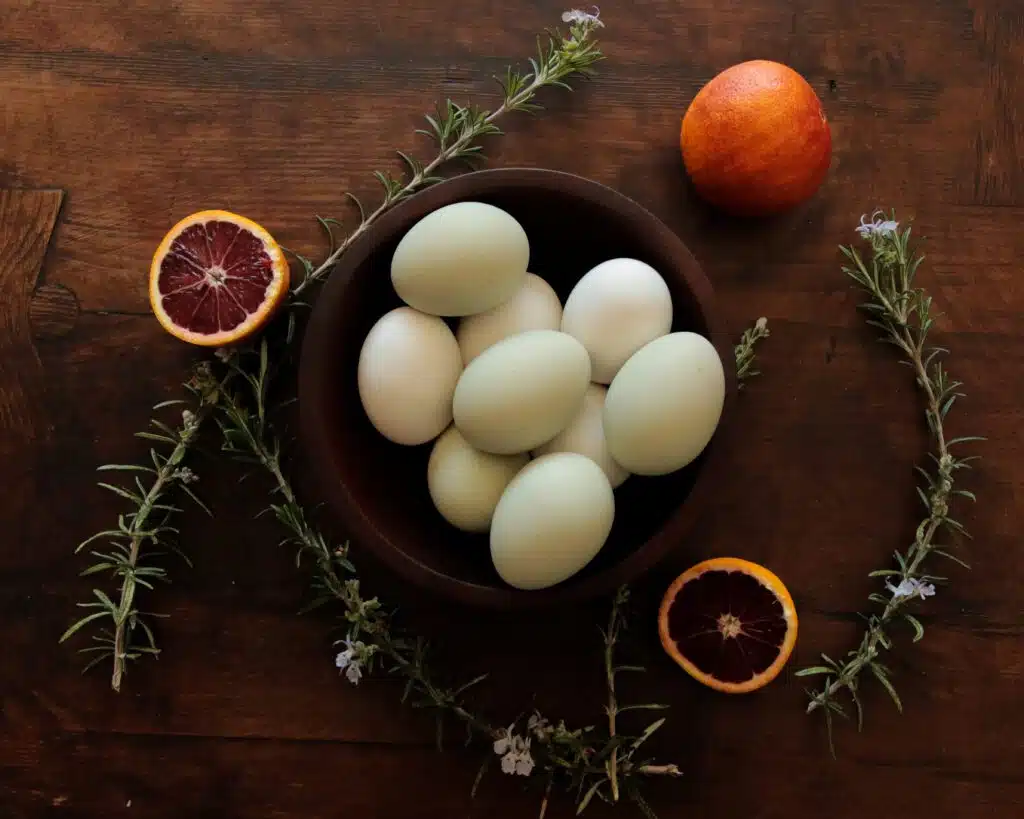
Why is seasonal eating important?
Seasonal eating has been very much on my mind and heart this past year. I have realized how disconnected we are as a culture from our food and from the natural rhythms of the planet. It was quite eye-opening how little I knew about where my food was coming from and how it arrived on my grocery store shelf. Additionally, before this past year, I thought very little about what foods were in season near me and how that should impact my purchasing decisions. Like many others, my mindset around food was very much along the lines of: “I want something, therefore, I will go to the store and buy it” with little other thought or question. I, like many people, wondered: “why shouldn’t we eat tomatoes in the winter or citrus in the summer?” As you can imagine, eating with the seasons does take a little time, research, and a mindset change.
What changed for me?
Depending on where you live, not every food can grow in every season. There are about four groups of foods in most produce aisles:
- In season fruits and vegetables which are grown within a few hours of where you live.
- In season fruits and vegetables which are grown far away and shipped to your grocery store.
- Out-of-season fruits and vegetables which are grown far from where you live and shipped to you
- Produce which will never be in season where you live and is therefore always shipped to your local grocery store. For example, in North Georgia, bananas will never be in season nearby so they are always shipped in.
In conclusion, whatever foods are not currently in season where you live are grown (usually) in another country and climate and shipped to your local grocery store.
What is the problem with buying these foods out of season?
- Shipping food from far away is harmful for the environment because of the burning of fossil fuels by trucks, trains, and ships used to transport the food.
- Shipping produce from far distances also means that the produce will not be nearly as fresh (as local produce) because it takes time for the produce to travel. This results in less nutrient dense produce and often produce that is sprayed or treated to last longer in transit.
- There is also a significant amount of packaging used to transport produce from other regions or countries. Buying local produce can reduce the amount of single use plastic and packaging.
- When you buy produce from far distances you are not supporting local agriculture or farming.
- When you buy produce from far distances, you cannot know if the workers who farmed the food were treated or paid fairly. When you have a relationship with a local farm, however, you can ask questions about their practices and often visit and see conditions for yourself.
Understanding Big AG:
Regardless of what they may tell you, big agriculture does not care about bringing you quality food. Large industrial farms are concerned with only one thing: producing a large amount of food and doing it for cheap. Do not be fooled by packaging, branding, or marketing that big ag or your big box grocery store cares about you, I promise you that the bottom line is more important to them. That being said, if we cannot trust these industries to give us healthy, local, seasonal food, we need to do a little research and educate ourselves.
This reminds me of a funny conversation I had with a friend this past spring: After buying a watermelon in April, I cautioned her that the watermelon might not be very tasty as it was out of season. She replied innocently:
“Of course it’s ripe, the grocery store wouldn’t sell me an unripe watermelon!”
Little did she know that the grocery store does not care if a fruit will taste delicious or ripe, they want your money and know you want a watermelon.
And no, the watermelon was not ripe.
Changing our mindset around Food
It is very appealing to be swept up by our culture of consumerism and instant gratification. When I crave a blueberry in December, I want to go to the grocery store and buy some! There is a reason why blueberries do not taste very good in the winter, they are out of season here in North Georgia. Instead of focusing on what I want and how nature can serve my cravings, I am thinking about how to work in balance and harmony with our planet and the seasons.
How to eat with the seasons
How crazy is it that we have to relearn to do something that was the norm for thousands of years? Our grocery stores are not set up for seasonal eating. It will take a little research and time to learn what eating with the seasons looks like for you. Don’t put too much pressure on yourself, you don’t have to be perfect!

Does this mean I can never shop at the grocery store again?
Of course, you can shop at your favorite grocery store! Eating seasonally and locally will simply change the way you shop. At the grocery store, this might mean researching what is in season and reading labels about where things are coming from. You might become inspired to visit your local farmers’ market, grow a few veggies, and explore other ways to have more agency in your produce choices.
Practical Tips and Tricks
Start with the ingredients, not the recipe.
By making seasonal fruits and veggies the base for your meal, you can find recipes and meals for these ingredients instead of choosing a recipe and buying whatever it calls for.
Allow yourself to be creative!
If leeks are growing in abundance in your garden, or on sale at the market, buy some and make them a key ingredient. If apples are in season, incorporate them into sweet and savory dishes. I love this aspect of seasonal eating because it calls me to branch out and try new things every season!
Join a CSA
“Community Supported Agriculture (CSA) is an arrangement in which consumers and farmers share responsibility for the production and delivery of food. The CSA partnership fosters mutual respect and support between a community of eaters and a community of farmers, and allows members to make a connection to the land and a commitment to environmentally-friendly food production.”
from the website of my local CSA
Community Supported Agriculture is such a great way to connect with your local farmers and produce. I love this option for those who cannot get to the farmer’s market every week. Additionally, in the winter the farmers market can be so cold and I just want to curl up with a few books on a Saturday morning. You can learn more about CSAs here.

Know your options
The grocery store is not the only place to buy food and neither is the farmers market! Do a little research about local markets, CSAs, produce buying clubs, and farms in your area. In my town, students from a local university hold a student garden farmers market where they sell produce at a very discounted price to the community. For me, this was a great intro to local seasonal food without the price tag.
Collaborate with friends
Form your own local from-scratch food community. Maybe someone you know loves to bake sourdough and you love to grow veggies, make a swap! Bring in a friend with a few suburban chickens or a game hunter. There are many creative ways to find and afford local seasonal food.
Grow your own food
The only way to truly know where everything is coming from is to grow it yourself. Maybe you have a window or balcony where you can grow herbs and microgreens, maybe you have a small backyard in the city or the suburbs where you can grow some veggies and fruits, any of these options are beautiful and worthwhile! If you have a bit of land, all the more reason to sow some seeds this year!
Have fun and don’t take yourself too seriously
Saving the environment and living seasonally can become pretty intense sometimes! Take a deep breath and remember that you do not need to be perfect. Learn what you can and do your best!
Leave a Reply